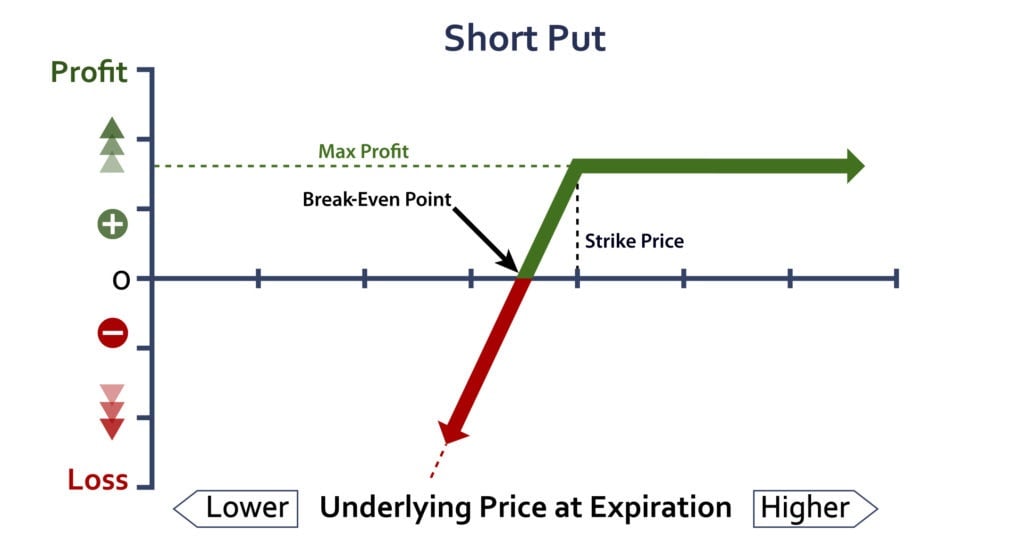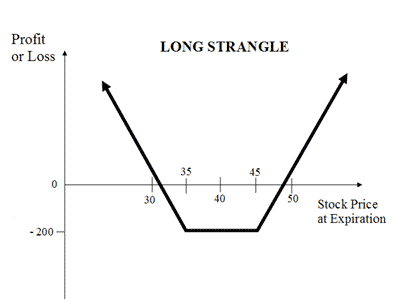 Zerodha (Trading & Demat Account)
Zerodha (Trading & Demat Account)
FREE Equity Delivery and MF
Flat ₹20/trade Intra-day/F&O
 Zerodha (Trading & Demat Account)
Zerodha (Trading & Demat Account)
FREE Equity Delivery and MF
Flat ₹20/trade Intra-day/F&O

|
|
Compare Short Put and Long Strangle (Buy Strangle) options trading strategies. Find similarities and differences between Short Put and Long Strangle (Buy Strangle) strategies. Find the best options trading strategy for your trading needs.
| Short Put | Long Strangle (Buy Strangle) | |
|---|---|---|
 |
 |
|
| About Strategy | A short put is another Bullish trading strategy wherein your view is that the price of an underlying will not move below a certain level. The strategy involves entering into a single position of selling a Put Option. It has low profit potential and is exposed to unlimited risk. A short put strategy involves selling a Put Option only. For example if you see that the shares of a Company A will not move below Rs 1000 then you sell the Put Option of that stock at Rs 1000 and receive the premium amount. The premium received will be the maximum profit you can earn from this trade. However, if the price of the underlying moves below 1000 then you will incur unlimited losses. | The Long Strangle (or Buy Strangle or Option Strangle) is a neutral strategy wherein Slightly OTM Put Options and Slightly OTM Call are bought simultaneously with same underlying asset and expiry date. This strategy can be used when the trader expects that the underlying stock will experience significant volatility in the near term. It is a limited risk and unlimited reward strategy. The maximum loss is the net premium paid while maximum profit is achieved when the underlying moves either significantly upwards or downwards at expiration. The usual Long Strangle Strategy looks like as below for NIFTY current index value at 10400 (NIFTY Spot Price): Options Strangle Orders OrdersNIFTY Strike Price Buy 1 Slightly OTM PutN... Read More |
| Market View | Bullish | Neutral |
| Strategy Level | Beginners | Beginners |
| Options Type | Put | Call + Put |
| Number of Positions | 1 | 2 |
| Risk Profile | Unlimited | Limited |
| Reward Profile | Limited | Unlimited |
| Breakeven Point | Strike Price - Premium | two break-even points |
| Short Put | Long Strangle (Buy Strangle) | |
|---|---|---|
| When to use? | Short Put works well when you're Bullish that the price of the underlying will not fall beyond a certain level. |
A Long Strangle is meant for special scenarios where you foresee a lot of volatility in the market due to election results, budget, policy change, annual result announcements etc. |
| Market View | Bullish When you are expecting the price or volatility of the underlying to increase marginally. |
Neutral When you are unsure of the direction of the underlying but expecting high volatility in it. |
| Action |
A short put strategy involves selling a Put Option only. So if you see that the shares of a Company A will not move below a 1000 then you sell the Put Option of that stock at 1000 and receive the premium amount. The premium received will be the maximum profit you can earn from this deal. However, if the price of the underlying moves below 1000 than you will incur losses. |
Suppose Nifty is currently at 10400 and you expect the price to move sharply but are unsure about the direction. In such a scenario, you can execute long strangle strategy by buying Nifty at 10600 and at 10800. The net premium paid will be your maximum loss while the profit will depend on how high or low the index moves. |
| Breakeven Point | Strike Price - Premium |
two break-even points A Options Strangle strategy has two break-even points. Lower Breakeven Point = Strike Price of Put - Net Premium Upper Breakeven Point = Strike Price of Call + Net Premium |
| Short Put | Long Strangle (Buy Strangle) | |
|---|---|---|
| Risks | Unlimited There is no limit to losses incurred in the trade. The risk is when the price of the underlying falls, and the Put is exercised. You are then obliged to buy the underlying at the strike price. |
Limited Max Loss = Net Premium Paid The maximum loss is limited to the net premium paid in the long strangle strategy. It occurs when the price of the underlying is trading between the strike price of Options. |
| Rewards | Limited The profit is limited to premium received in your account when you sell the Put Option. |
Unlimited Maximum profit is achieved when the underlying moves significantly up and down at expiration. Profit = Price of Underlying - Strike Price of Long Call - Net Premium Paid Or Profit = Strike Price of Long Put - Price of Underlying - Net Premium Paid |
| Maximum Profit Scenario | Underlying doesn't go down and options remain exercised. |
One Option exercised |
| Maximum Loss Scenario | Underlying goes down and options remain exercised. |
Both Option not exercised |
| Short Put | Long Strangle (Buy Strangle) | |
|---|---|---|
| Advantages | It allows you benefit from time decay. And earn income in a rising or range bound market scenario. |
|
| Disadvantage | It is a high risk strategy and may cause huge losses if the price of the underlying falls steeply. |
The strategy requires significant price movements in the underlying to gain profits. |
| Simillar Strategies | Bull Put Spread, Covered Call, Short Straddle |
Long Straddle, Short Strangle |

Add a public comment...

FREE Intraday Trading (Eq, F&O)
Flat ₹20 Per Trade in F&O
|
|